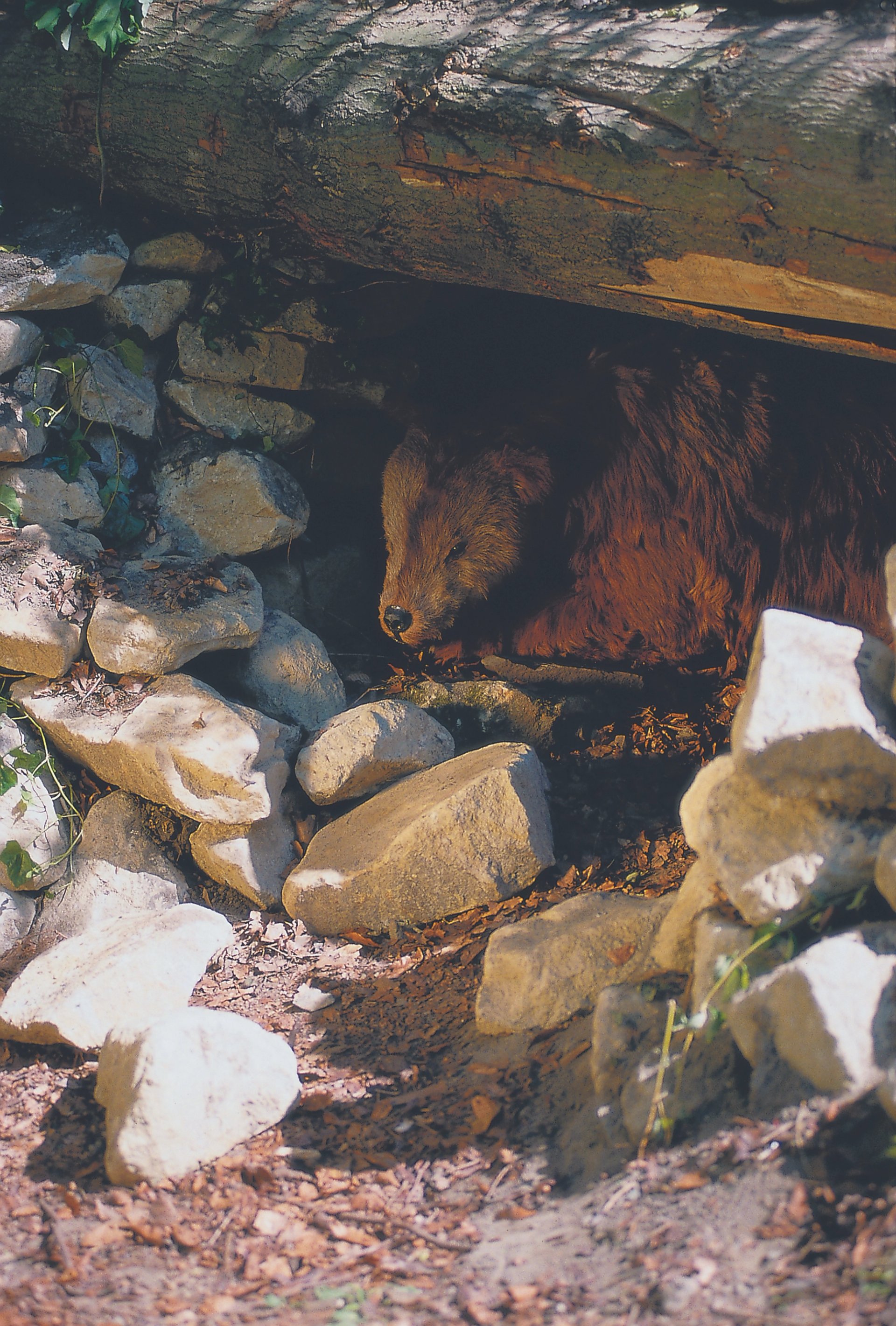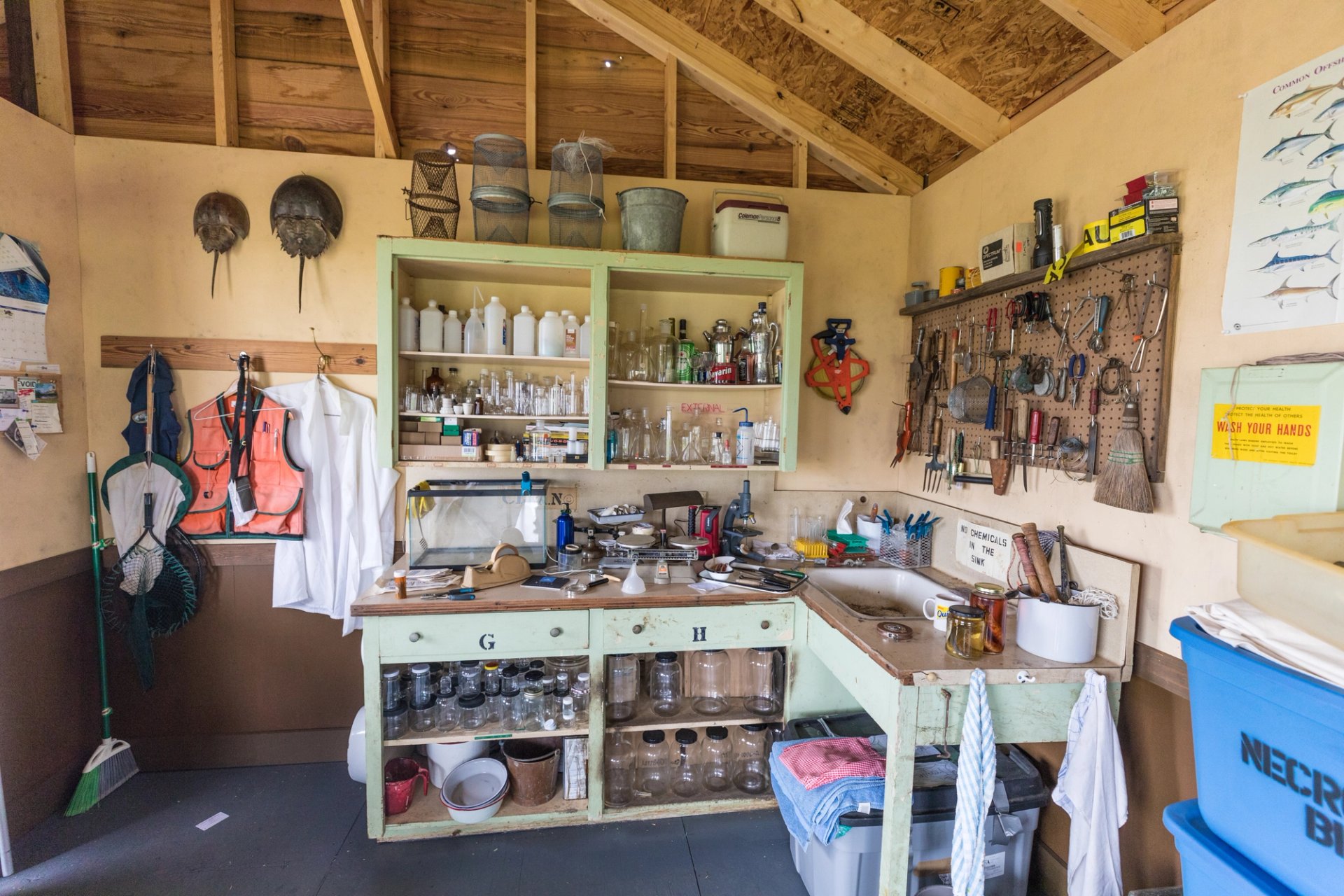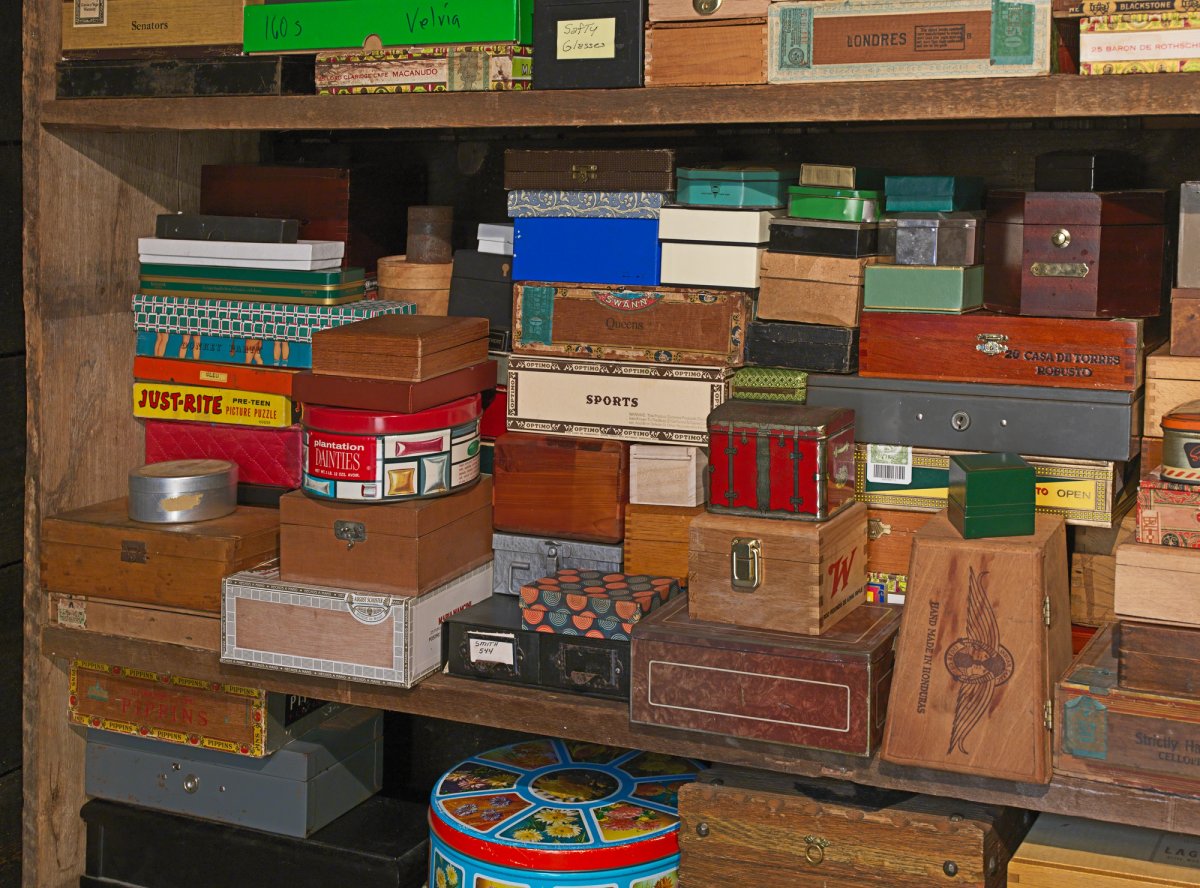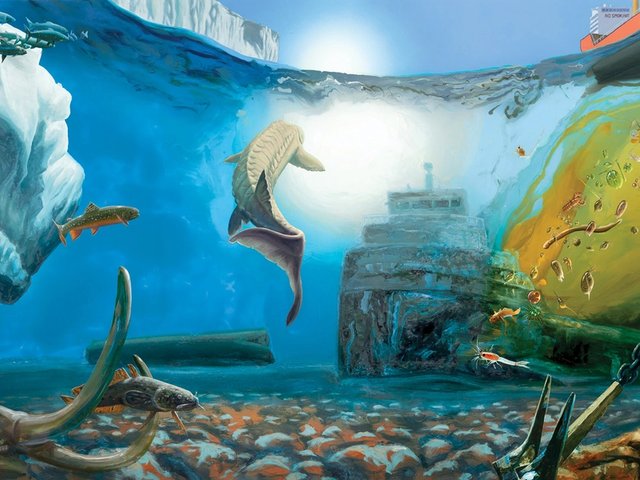“There’s so much talk now about, ‘Does this object give me joy,’” says the artist Mark Dion, who in May will be showing his ecologically minded, richly detailed installations of accumulated objects, scientific research and architectural elements in a major solo show at the Storm King Art Centre in upstate New York. “All of these things give me joy.”
Dion is specifically referring to his piece the Memory Box (2015), a wood and steel shed containing shelves full of boxes holding trinkets and mementos that visitors can peruse in Storm King’s main museum building. But really, he could be talking about any of the dozen work in the show Mark Dion: Follies (4 May-11 November), like Grotto of the Sleeping Bear, a den with a taxidermied brown bear slumbering on a pile of discarded man-made materials. Originally made for the 1997 Skulptur Projekte Münster exhibition, the installation is being recreated for New York where growing bear populations are becoming an urgent concern for local communities.

Mark Dion, Grotto of the Sleeping Bear (1997)
Such an unavoidable preoccupation with environmental problems is something Dion expects will resonate with visitors to the 500-acre outdoor sculpture park. “There are so many people in the Hudson Valley who are engaged with these issues,” he says, adding that there is a large audience for work informed by science and other disciplines. “Not a lot of people are able to experience art with the sort of depth of art history studies, but they can come to it through these other things.”
This is a factor the art centre has also tapped into, with Dion’s exhibition following on directly from his participation in last year’s climate change themed group show Indicators. His Field Station for the Melancholy Marine Biologist (2018), a full-scale scientific research office that first appear at the Prospect Biennial in New Orleans, was reworked for that show to focus on the Hudson River and the problems of the North Atlantic Fisheries, and is staying on view through this year.

Mark Dion, The Field Station of the Melancholy Marine Biologist (2017) installed at Prospect New Orleans Photo by Zack Smith Courtesy the artist and Tanya Bonakdar Gallery, New York / Los Angeles
“Storm King is evolving in a very interesting way,” Dion says of the space, which was opened by the collector Ralph Ogden in 1960 and holds large-scale sculptural works by artists like Mark di Suvero, Alexander Calder and Sol LeWitt. “It worked primarily with one generation of artists, and then for a younger generation, it felt a little bit irrelevant, very much frozen in time,” Dion says. He credits Nora Lawrence, Storm King’s senior curator, who co-organised his show with the director and chief curator David Collens and curatorial assistant Sarah Diver, with bringing in more contemporary artists as well as understanding “that Storm King is both this amazing sculpture park and this amazing environment”.
One new work that will draw attention to the site’s flora and fauna is a field station installation built inside a former water tank brought in from Texas. This creative reuse is another recurring element of Dion’s work over the years. “My practice is a quite ecological practice. I almost never buy something new. I buy things that have been around, in some cases, for centuries, and re-contextualise them,” he says. “I’m very interested in that accumulated patina of use that an object has. I would never buy a new hammer when I know I can go to any of my four-dozen thrift stores and buy a $3 used hammer that has been in someone’s hands for decades and decades.”




